Original Author: Castle Labs
Translation | Odaily Planet Daily (@OdailyChina)
Translator | Ethan (@ethanzhangweb3)_
Translator's Note: In the Web3 world, nothing is scarcer or more real than "attention"—you may not delve into white papers, but you will certainly notice the current hot topics amidst the bombardment of social media.
This article serves as an open letter to crypto Twitter, resembling an experimental memo on "decentralized chatter economics." It discusses a new narrative driven by emotions and the emerging paradigm shift in the commercialization of attention.
We should rethink, how should the Web3 world assess "influence"? After all, KOLs, COLs, project parties, creators, and even bystanders are all being drawn into this power struggle of discourse.

With a touch of mystery and in-depth research on "viral transmission," @0x_ultra has sparked high-frequency discussions in the crypto Twitter community about @stayLoudio. As of now, Loudio has captured over 70% of the "mindshare" in English crypto Twitter.
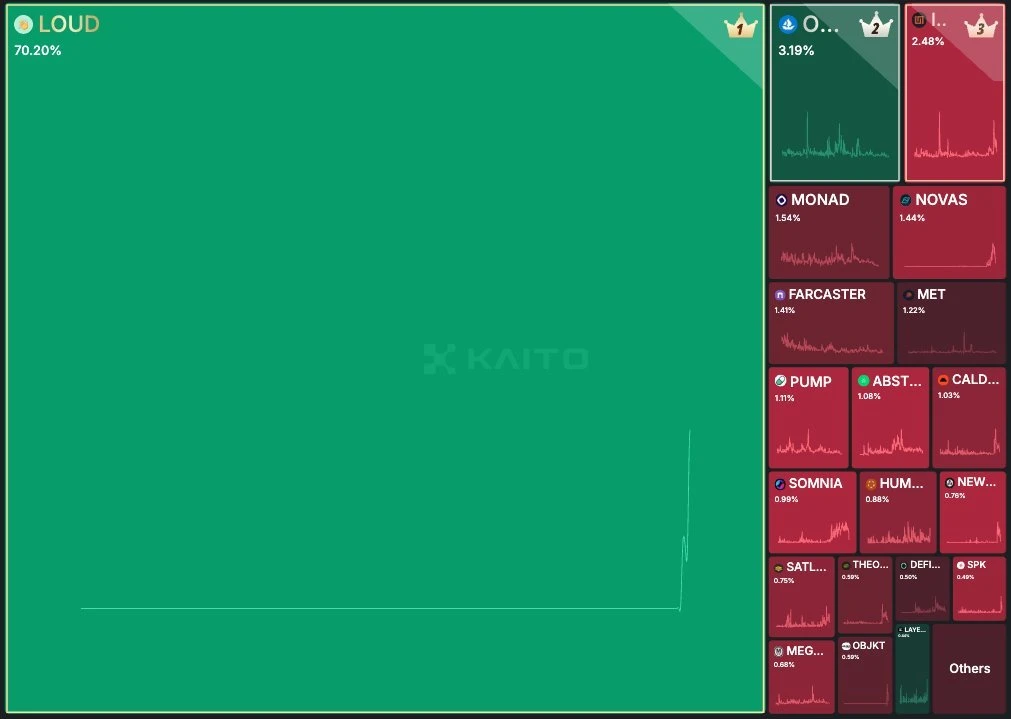
This phenomenon aligns perfectly with the evolving roles of attention and mindshare in today's narratives, which I have touched upon in an article I wrote for Kaito.
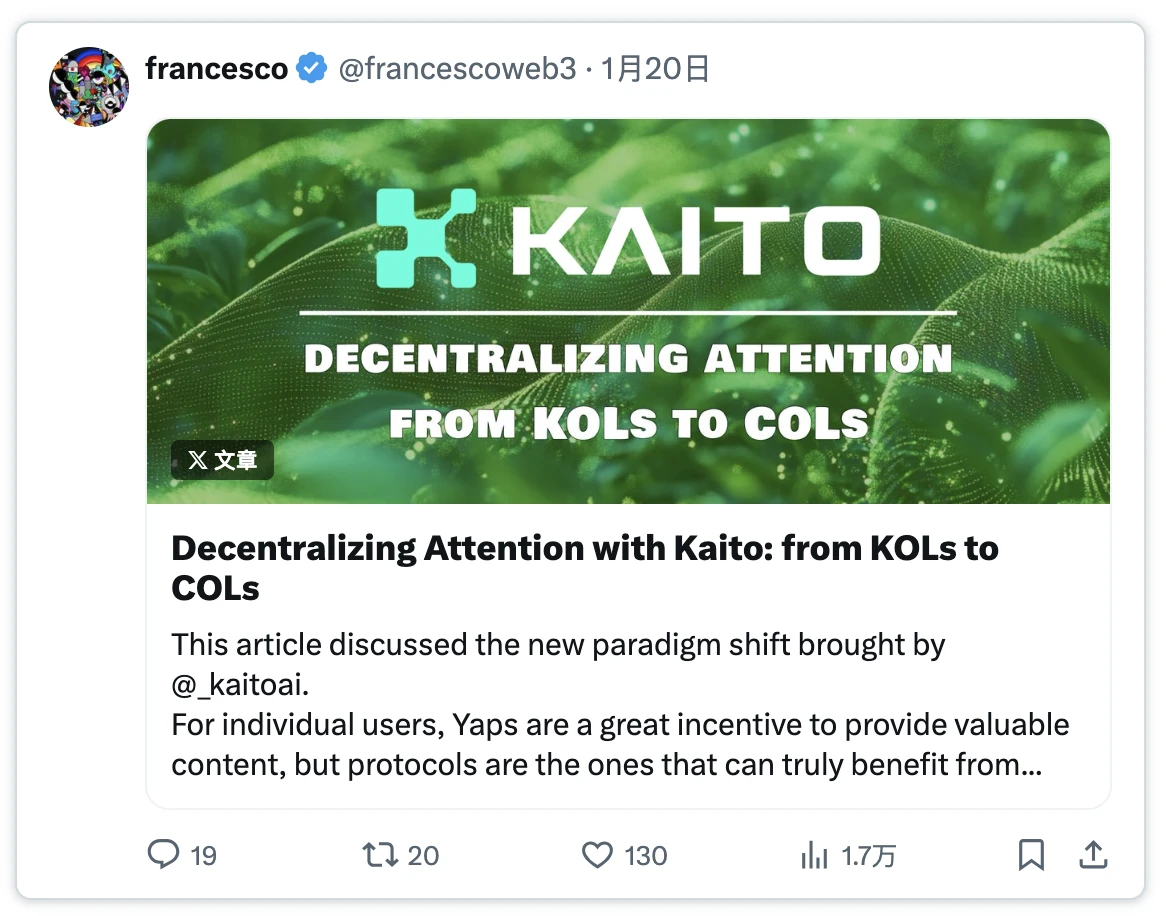
In short, Kaito has reshaped the connection between protocols and KOLs to enhance brand awareness and expand crypto Twitter's distribution capabilities. We all know that the KOL space has long been manipulated: a few large accounts hold the "tickets" to content distribution.
At the same time, many KOLs use bots and fake interactions to "inflate data." Projects often spend money but fail to buy genuine attention.
Kaito effectively decentralizes the attention market, turning "attention" into a quantifiable commodity through a universal reputation system.
This system also serves as a filtering mechanism, ranking KOLs based on their smart follower count and actual contributions. In that article, I predicted that the attention structure would shift from KOLs to COLs.
Through Kaito, protocols can bypass marketing and KOL intermediaries, rewarding based on community contributions.
Loudio takes it a step further, becoming a new experiment in attention and user interaction. It integrates the following elements:
@KaitoAI: Attention economy model
@Believeapp: A distribution platform aligned with creator interests
The most appealing aspect of this project is its borrowing of the "3,3" mechanism initiated by OlympusDAO, but applied in the dimension of reputation: connecting those who need interaction and content with KOLs and "chatterboxes" (i.e., louders).
Here, "3,3" should not only be understood in the traditional sense but also signifies a non-traditional collaboration mechanism among louders. To maintain a leading position on the leaderboard, they may need to form alliances, create secondary markets, and share profits with community members, achieving collaborative efforts.
Loudio is more social than Olympus: you might sell your OHM, but what if you are betting your reputation?
For KOLs, your "value" is your "reputation."
Loudio further extends on the foundation of Kaito, establishing a new social contract framework where KOLs can monetize their attention by continuously competing for top positions on the leaderboard to earn rewards.
Without further ado, here is the basic architecture of the Loudio system:
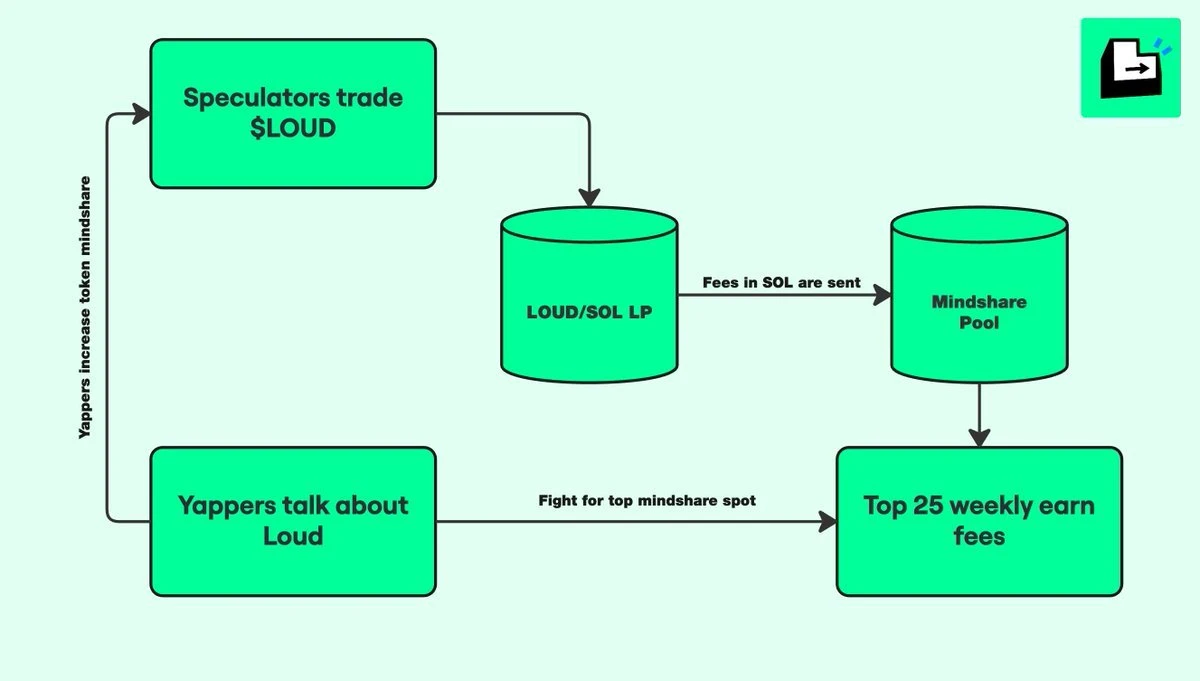
How Does the LOUD Flywheel Mechanism Operate?
Each LOUD token exchange incurs a 4% transaction fee;
Weekly fees are pooled into the "Mindshare Pool," distributed proportionally among the top 25 contributors;
18% of the fees are allocated to KAITO stakers;
The stringent selection criteria for the top 25 are intentional, aimed at incentivizing loyalty, content quality, and competitive drive.
This "gamification" mechanism is crucial: users are incentivized to "speak up" as loudly as possible to capture the most attention, thereby earning entry into the Mindshare reward pool.
The LOUD token should not be "over-analyzed" by crypto analysts on X. As Ultra stated, it should be viewed as a tool for measuring and pricing attention.
Loudio will officially launch tomorrow on the @HoloworldAI Launchpad.
Teams to Watch:
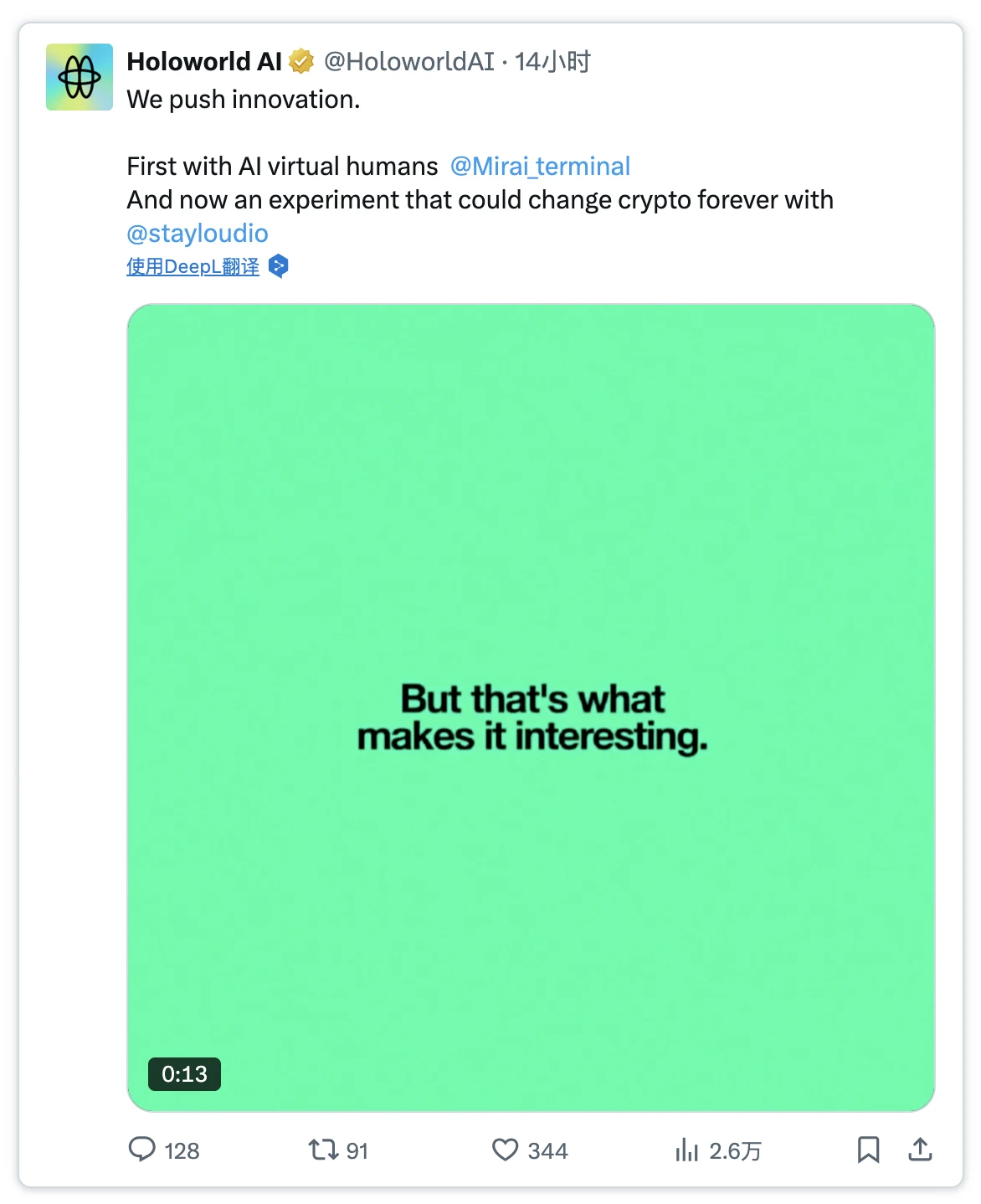
One of the key figures in Loudio, Slayed, is also a co-founder:
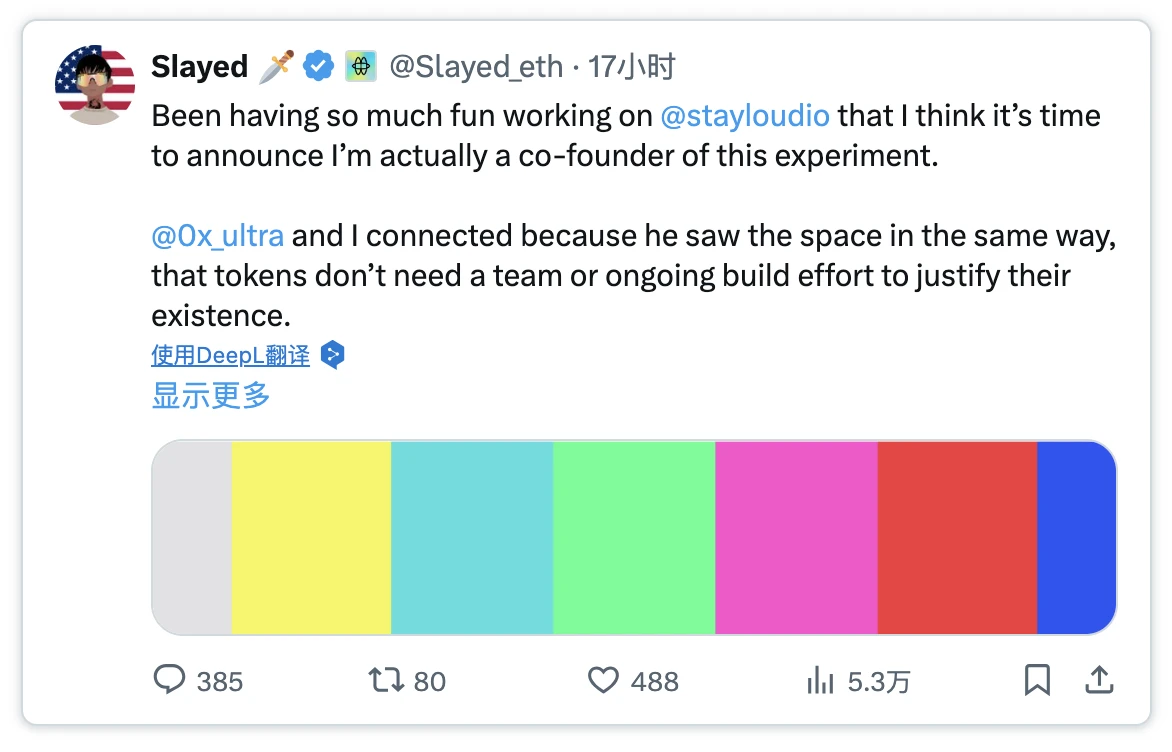
Loudio Player's Manual
Why Can Loudio Become Popular?
Hits Deep Human Emotions: Am I really as cool as I think I am? Can I break into the top 25 by tweeting? This is the "ultimate narcissism test" for KOLs. Having big accounts personally compete for attention resources is no joke. This aspect has significantly contributed to Loudio's current level of attention.
Limited Information Sparks Speculation: With few details released, people start to speculate wildly. This uncertainty actually fuels the enthusiasm for discussion. The community trusts Ultra, believes in the narrative, and also trusts the connection with Kaito.
Extremely Simple Mechanism: It's not complicated at all. People just need to "speak up" without needing to mine or engage in other operations.
Riding on Kaito's Momentum: How should project parties use Kaito? It's not entirely clear yet, but Loudio is one of the first to try it out, enjoying "early bird benefits," market curiosity, and potential value. If it succeeds, Kaito will establish its position as an infrastructure and analytical component, not just for Web3 but potentially extending to broader fields.
Kaito is continuously reaping the rewards:
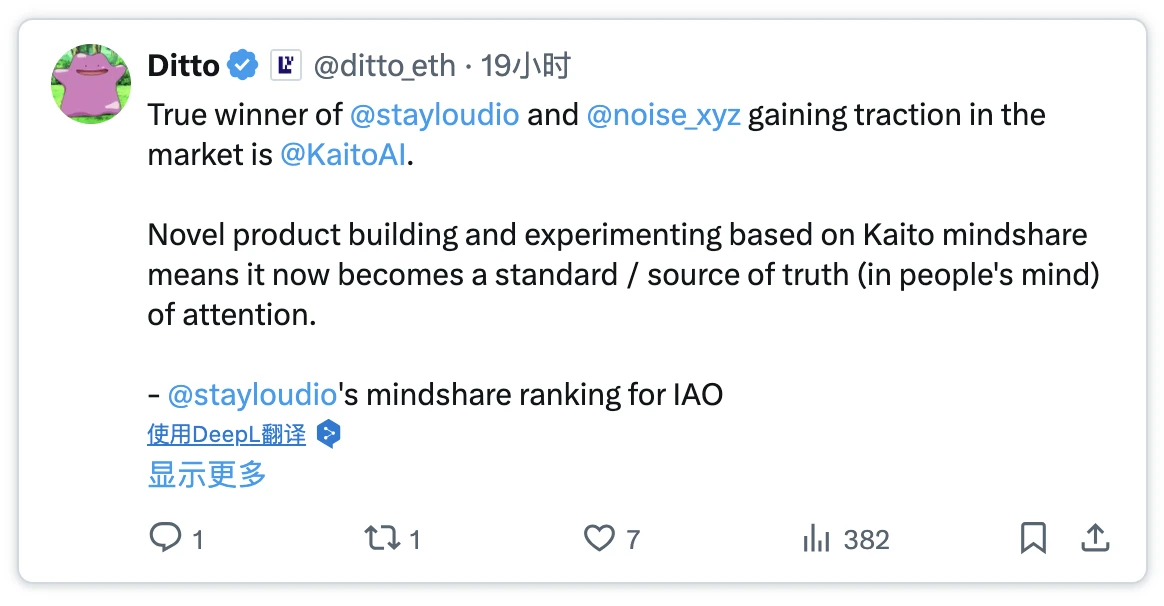
If Loudio succeeds, then forms like "Initial Attention Offering (IAO)" may become the 2025 version of ICOs (Initial Coin Offerings). This could be one of the explosive points of future narratives: (@beast_ico has some brilliant insights)
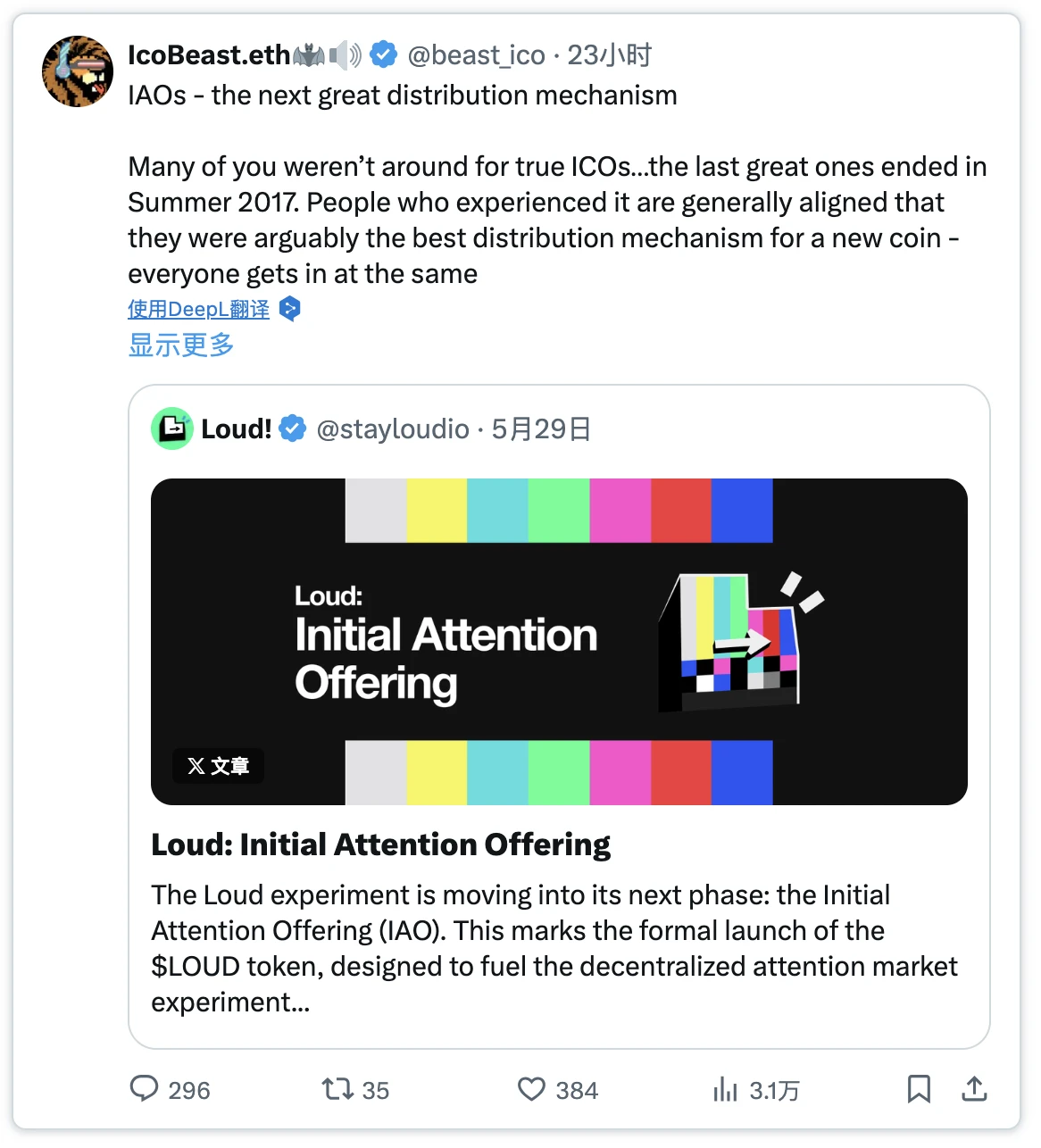
So… will Kaito launch its own IAO Launchpad?
Concerns and Reflections
When Kaito and Loudio are fully operational, is our timeline filled with noise? Is it true that whoever pays more can be reshared and gain attention?
Kaito has restructured the attention distribution model, becoming the "most efficient" distribution mechanism per dollar, accelerating the trends of attention transfer and information flooding.
But at the same time, don't hate the players; hate the game itself.
Social media has already undergone significant changes due to various nested monetization mechanisms, and this path will clearly continue.
However, this will eventually reach the "inflationary tipping point" of attention.
What will social platforms do then?
Will they actively filter out this noise?
Or will they allow thousands of AI accounts to further exacerbate the chaos?
These are all worth pondering.
Another Concern: Is Loudio Unfriendly to "Alt Accounts"?
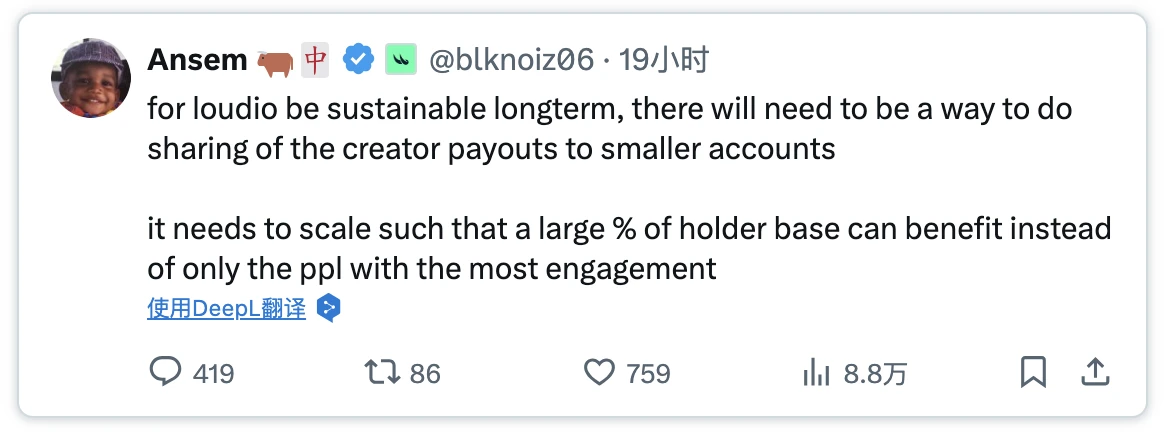
Loudio is essentially an "attention market." Project parties want to find top accounts to endorse them.
No one cares about the long tweets posted by Francescoweb3. They just want @beast_ico and @blknoiz06 to speak up.
So, do smaller accounts have a chance?
The answer is: they might participate through the following ways:
Earning a share of transaction fees from creators
Receiving airdrops from project parties
Participating in community-led third-party markets, etc.
Otherwise, relying on them to break into the top 25 on the leaderboard is indeed unrealistic.
This has been somewhat alleviated by the broader participation thresholds in IAO.
Summary
What is the ultimate form of Loudio? We still need to wait for the dust to settle.
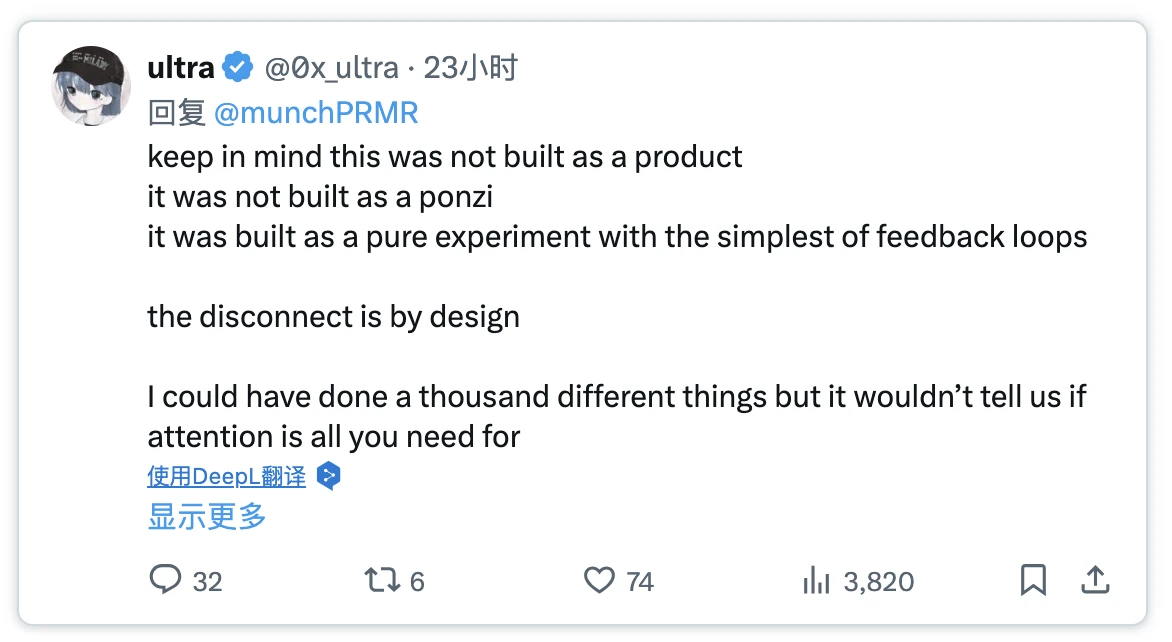
免责声明:本文章仅代表作者个人观点,不代表本平台的立场和观点。本文章仅供信息分享,不构成对任何人的任何投资建议。用户与作者之间的任何争议,与本平台无关。如网页中刊载的文章或图片涉及侵权,请提供相关的权利证明和身份证明发送邮件到support@aicoin.com,本平台相关工作人员将会进行核查。




